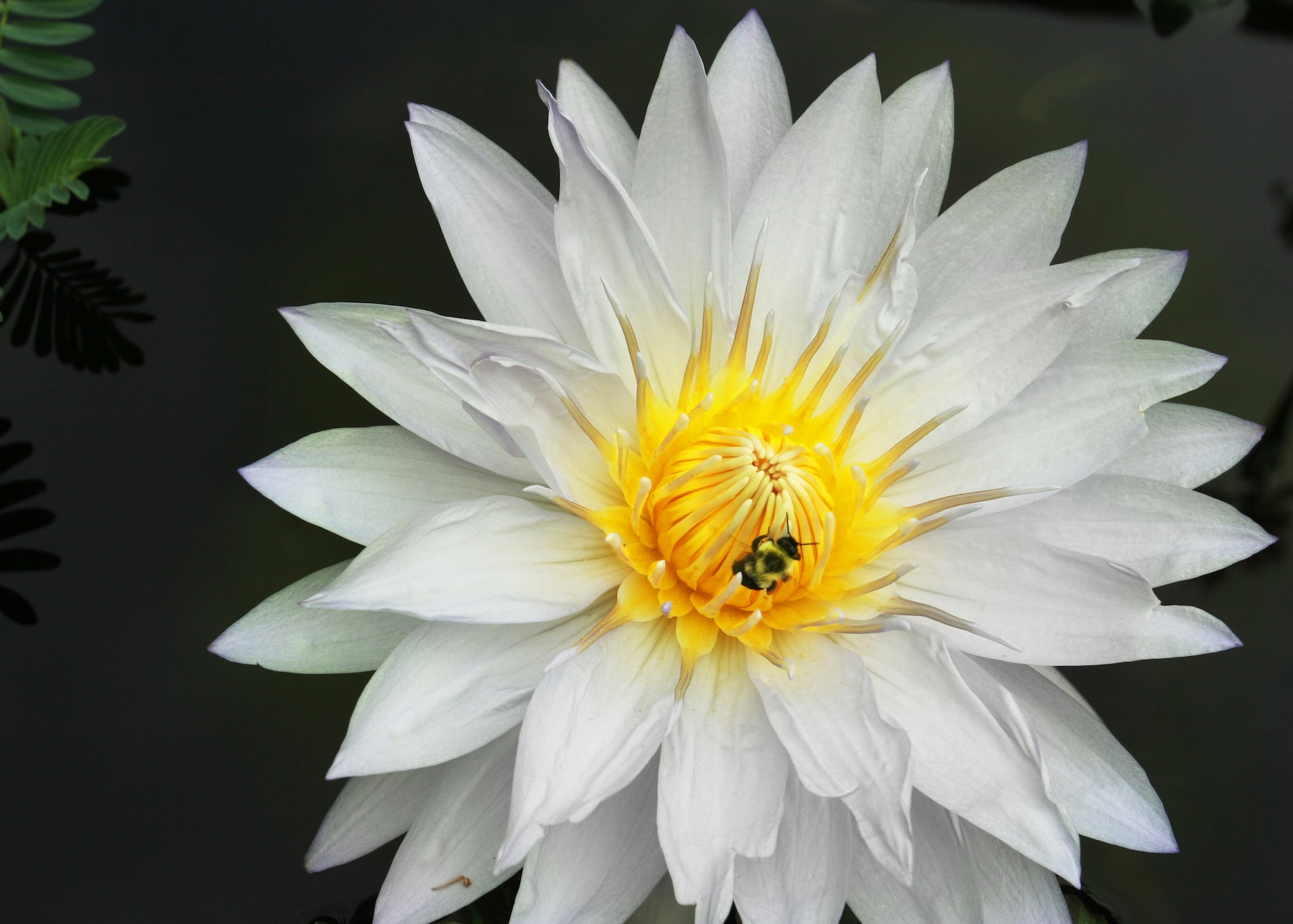Your Cart is Empty

October 24, 2016
Who doesn't love Water Lilies? With all their beautiful colors and magic carpet pads that float on the water's surface, they transform tea-colored ponds into a kaleidoscopic paradise.
If you're attracted to White Water Lily, you may feel as if there are invisible walls around you, preventing you from really seeing. There are times in our lives when we feel that nothing is clear and nothing is happening, which usually couldn't be further from the truth.
If you've been hibernating, it may simply be because you are growing something bigger than yourself. Oftentimes we need to dissolve or unravel everything in life in order to reconstruct it in a whole new way that will better support what's to come.
If things have not been going as expected on a project you're working on, see it as a gestation period. Something is getting ready to be birthed, and it may be completely different from (and better than!) your expectations.

Just as the water lilies pull themselves down underwater to transform into fruit, the White Water Lily Flower Elixir pulls us into a world of heightened awareness + sensitivity. It sharpens our perceptions of seeing, hearing, smelling, tasting + touching, and it helps us stop to notice the magic + beauty around us all the time.
White Water Lily also helps us to be more in tune, boosting our intuitive qualities, and the ability to recognize synchronicity. It enhances compassion, as well as a deep understanding + anticipation of others' needs around us.
White Water Lily dissolves dullness or feeling unclear. It teaches us patience + enhances clarity. If something is unclear, wait until the mud settles; when the water is clear, then decide + move forward.
As one of the world's oldest aquatic plants (dating back over 65 million years) scientists have discovered water lily fossils with pads over four feet wide! Water lilies originate from North Africa + Europe, but they now grow all over the world.
There are roughly 70 different species of water lilies worldwide, including both night- + day-bloomers. Water lilies come in a variety of beautiful colors, including the indigos, blues and purples frequently depicted in ancient Egyptian art, where the blue blossoms were commonly infused into wine and used as a euphoric during festivals + religious rites. The blue water lily was revered in Ancient Egypt, representing fertility and the renewal of life + rebirth and was often referred to as the blue lotus.
Historically, the White Water Lily (Nymphaea odorata) in particular has always been a symbol of purity + chastity. The Latin botanical name Nymphaeacomes from the Greek word meaning "water nymph." The Greeks are said to have given white water lilies this name due to its anti-aphrodisiac qualities. In Central America and Mexico, the Mayans revered water lilies as a sacred symbol of the earth.

In herbalism, White Water Lily has been used to address irritation + swelling of sensitives tissue, such as in mouth and eye washes. It can be used externally in a poultice for bruises, sores, irritated skin and other forms of inflammation. The roots have been used to make tea for coughs and inflamed glands + mouth sores, and there is even a folk tradition of mixing White Water Lily root with lemon juice and applying to the face to remove blemishes.
CAUTION: The White Water Lily referred to here for herbal use is the highly fragrant Nymphaea odorata, also commonly known as the American White Water Lily. There is another White Water Lily that does not have a scent that is poisonous: Nymphaea tuberosa. The roots and leaves of the fragrant White Water Lily can be used in cooking and the flowers can even be made into a jam! However, one must be very careful in the identification process so as not to confuse it with the other species that are poisonous.
People often confuse water lilies and lotuses. Even the scientific community classified the lotus with waterlilies, until DNA technology became more advanced in the late 1980s and showed that, in fact, the lotus flower is more closely related to trees than to water lilies!
Here's the easiest way to tell them apart: Water Lily pads (leaves) rest elegantly on the surface of the water, while Lotus leaves emerge from the water entirely, growing toward the sky. Another significant difference is in the leaf shape—water lilies always have a distinctive notch on one side, while lotus leaves are entirely circular.
One of the most interesting aspects of the Water Lily is the way it grows. After the flower blossoms, it pulls itself down under the water in a corkscrew pattern, where it transforms into a fruit. When the seeds are ready, they float back up to the top of the waters, where they can then travel to other parts of the pond and eventually burrow in the mud.
Water Lilies are not just beautiful to look at—they also have tremendous benefits for their environment. They filter + purify the water for all the other species in the water as well as provide shade + cooler water for the fish to reside.
Magnifies: Awareness, sensitivity to others’ needs, compassion, synchronicity; feeling more connected to everyone and everything around you; sharper senses and perception: hearing, smelling, seeing, feeling, tasting
Dissolves: Lack of awareness or clarity; ignorance or feeling dull; walls around you that prevent you from seeing

Wild Abundance offers a powerful way to experience interconnectedness with everything around us. When we sense the divine in every moment, we instantaneously begin to tune into the infinite possibilities that are available to us and perceive the magic of everyday life.
Love + flower petals,
